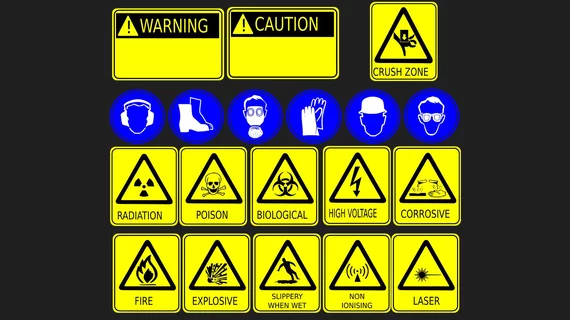Nearly 90 latent safety threats identified, addressed before 2 new imaging suites see first patient
When conducted inside imaging suites soon to open, simulation exercises can help identify potentially serious threats to patient safety that may not have been carefully considered when the spaces were designed.
So found researchers at Nemours Children’s Health of Delaware Valley when they simulated patient care scenarios in both an interventional radiology room and an MRI suite.
The institution’s medical director of simulation, Maria Carmen Diaz, MD, an emergency medicine specialist, described the project this week at the annual national meeting of the American Academy of Pediatrics in Anaheim, Calif.
Ahead of the simulation exercises, Diaz’s simulation team met with key representatives from radiology, critical care, sedation, anesthesia, construction project management, plant operations and IT clinical applications. The meetings were structured to assess stakeholders’ needs and preferences, according to a presentation abstract shared with Radiology Business [1].
The advance stakeholder discussions yielded collaboratively conceived scenarios involving not only routine procedures for sedated and non-sedated patients but also escalating cases in which patient conditions rapidly deteriorated.
Along with detailed workflow walk-throughs and space assessments, the planned scenarios included patient entrances into and exits out of each room.
During the live onsite exercises in the MRI suite, 21 stakeholders participated in four simulated scenarios—two routine and two with patient decompensation, Diaz and colleagues report in the abstract.
Of 39 latent safety threats, or LSTs, identified in the simulated situations, 24 were of high criticality, five were medium and 10 were low. Afterwards, the multidisciplinary teams named eight additional LSTs looming in the MRI room.
Examples of averted high-criticality LSTs included processes to remove a coding patient from the ferrous environment and routes to the new space, the authors report.
To the point of the project, the stakeholders developed fixes to the threats within two weeks, comfortably ahead of the MRI room’s go-live.
For the interventional radiology simulation exercises, 19 participants walked through five simulation scenarios. Of these, four were routine and one was a coding patient. During the simulations the IR group identified 48 latent safety threats (23 high criticality, 17 medium and 8 low), and they itemized six additional threats post-simulation.
Key IR participants took four weeks to develop threat countermeasures.
Examples of high-criticality LSTs headed off in the new IR space included technology interface issues.
In their presentation abstract, Diaz and colleagues comment that pediatric patients undergoing procedures in IR and MRI suites “encompass a wide spectrum of ages and medical complexities. These physical spaces must therefore be optimized to ensure that multidisciplinary teams work cohesively together and that systems, pathways and processes support and enhance patient care within that space.”
Diaz et al. conclude:
Our simulations identified latent safety threats and processes that were addressed and improved upon prior to opening our two new spaces. We believe this model of using simulation to integrate teams into a new space was successful and encourage this approach with future endeavors. Ongoing analysis is needed to see if recommended and implemented changes are sustained over time.”

